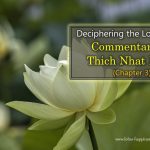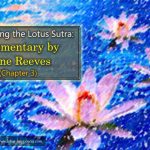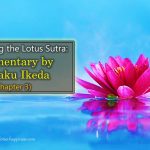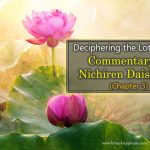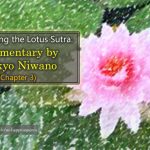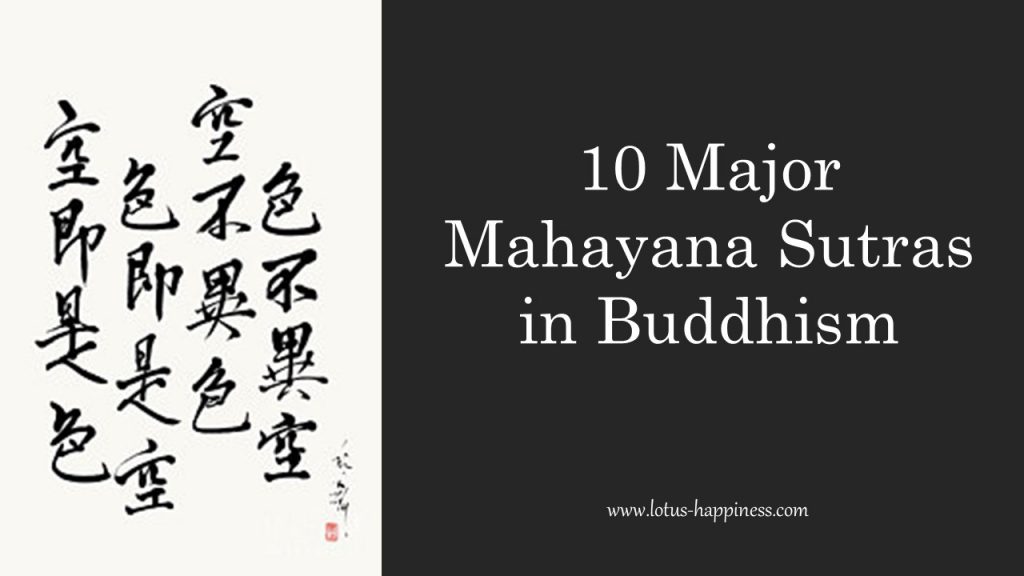
10 Major Mahayana Sutras in Buddhism
The sutras of the Buddha-Dharma are immeasurable like an infinitely vast ocean. It is said that there are 64,000 compendium of Buddhist sutras. With so many sutras available, have you ever wondered which are the major sutras to focus for Mahayana traditions?
When it comes to the practice of Buddhism, there is no better way to connect and understand the Buddha’s minds than through reading and studying the sutras ourselves.
Most of the time, we understand Buddhism through the lens and interpretations of a Buddhist master, as opposed to understanding the Buddha’s teachings through reading the sutras.
Why is reading the sutras so important?
All Buddhist masters are humans and humans are not infallible, let alone free of foibles. The diverse personalities and intellectual capacities of Buddhist masters play a significant role in their focus when it comes to the interpretation and explanation of the sutras.
Therefore, it is crucial that genuine Buddhist disciples take it upon themselves to read, study, and understand the sutras. We can read millions of commentaries by countless Buddhist masters but nothing beats the sublime bliss of experiencing the eureka moment of sudden awakening when we grasp the deeper meaning.
Now that most of us are leading a hectic lifestyle with so many commitments to juggle – be it in work, family, friends, and personal well-being, finding time to read becomes a real struggle.
With so limited time to spare and yet so much to read, which sutras should you focus?
If you wish to learn more about Buddhism from the Mahayana perspective, you may wish to focus your time and efforts on the following 10 most important Mahayana sutras:
#1 – The Great Perfection of Wisdom Sutra (Maha Prajñāpāramitā Sūtra)《大般若波罗蜜多经》
The Great Perfection of Wisdom Sutra is a collection of about 40 sutras. Among these, the Heart Sutra (Mahaprajnaparamita-hridaya-sutra 《心经》) and the Diamond Sutra (Vajracchedika-sutra《金刚经》) are the most well-known. Its key teaching is the doctrine of “emptiness” (sunyata).
This sutra becomes the basis for Nagarjuna of the Madhyamaka school to develop the doctrine of “the Middle Way”. According to Nagarjuna, emptiness is the wisdom of middle way.
#2 – Jewel Heap Sutra (Mahā Ratnakūṭa Sūtra) 《大宝积经》
It is one of the oldest sutras, which belongs to the Vaipulya group of 49 independent sutras. Some of the independent sutras contain within are:
- Infinite Life Sutra (also known as Longer Amitabha Sutra, Amitabhavyuha Sutra, 《无量寿经》): It contains the 48 vows of Amitabha to save all living beings, as well as discourse on the future Buddha Maitreya.
- The sutra of Lion’s Roar of Queen Srimala (Srimaladevi Siṃhanada Sutra) 《胜鬘经》: It teaches about the Buddha-nature and the ekayana (“One Buddha Vehicle”) through the Indian Queen Srimala.
#3 – Sandhinirmocana Sutra《解深密经》
The purpose of the sutra is to clarify confusing or contradictory elements of earlier teachings, presenting a new teaching that resolves earlier inconsistencies. This is in line with the meaning of its title “Sandhinirmocana” which means “Explanation of the Profound Secrets.”
This sutra expounds the doctrine of “consciousness-only”. Concepts such as true nature of the phenomena or True Suchness (bhuta-tathata), Eight Consciousness, Three Marks of Existence (Trilakṣana), meditation methods, and Six Paramitas are expounded in the sutra.
Sandhinirmocana Sutra has inspired an array of commentaries and discussions by Asanga, Vasubandhu, Xuanzang, Woncheuk, and Je Tsongkhapa.
It is one of the most important texts of Yogacara tradition of Buddhism.
#4 – Amitabha Sutra《阿弥陀经》
Amitabha Sutra describes the blessings and virtues of Amitabha Buddha and his Sukhavati (Pure Land or the Land of Ultimate Bliss), and also spells out the method for those who wish to attain rebirth in the Pure Land by chanting “Namu Amitabha” with a focus mind.
The purpose of choosing to reborn in the Pure Land is to continue practicing the Law of Supreme Perfect Enlightenment in an environment free of suffering.
Amitabha Sutra is one of the three sutras that form the doctrinal basis of the Pureland School, along with the other two sutras – Amitayurdyhana Sutra (meditation) and Infinite Life Sutra (i.e. Longer Amitabha Sutra).
# 5 – Vimalakirti Sutra 《维摩诘经》
Vimalakirti Sutra is a discourse in which the Mahayana principles of “emptiness” and “non-duality” are presented in the form of a conversation between famous Buddhist disciples such as Shariputra and Bodhisattva Manjushri and the householder, Vimalakirti.
Vimalakirti Sutra is entrusted by the Buddha to Bodhisattva Maitreya for divine protection and propagation.
#6 – Lankavatara Sutra《楞伽经》
The word “Lankavatara” means “Entering into Sri Lanka”. It teaches the doctrines of “emptiness” and “mind only”. In other words, our minds perceive reality in terms of an observer and distinctive things being observed, and that the distinctive things have no identity outside of this perception.
Lankavatara Sutra also expounds that words are not necessary for the transmission of Dharma, a teaching deemed particularly important to Chan/Zen school.
Lankavatara Sutra one of the scriptural basis of the Yogacara and Zen schools.
#7 – Heroic Gate Sutra (Shurangama Sutra)《楞严经》
This sutra emphasises the importance and power of Samadhi (meditation) and explains various methods of emptiness meditation to overcome the delusions arising from the five aggregates – form, feeling, perception, volition, and consciousness.
It is also a teaching on awakening one’s true self or true nature (明心见性) in the journey toward enlightenment. The sutra also describes 25 gates to the realization of one’s true nature, 60 methods/stages to attain enlightenment.
Shurangama Sutra one of the key scriptures of Chan/Zen schools.
#8 – Flower Garland Sutra (Avatamsaka Sutra) 《华严经》
Flower Garland Sutra, also known as Avatamsaka/Flower Adornment/Ornament Sutra is the second longest sutra in the Mahayana Canon as it contains 40 chapters. Certain sutras within the Flower Garland Sutra become independent sutras in its own right:
- Entering the Dharma Realm Sutra (Gandavyuha Sutra) 《入法界品》: Story of Sudhana’s journey to visit 52 masters to gain 52 teachings.
- Ten Stages Sutra (Dashabhumika Sutra) 《十地经》: The ten stages are also depicted in the Laṅkāvatāra Sūtra and the Śūraṅgama Sūtra. It also teaches the “aspiration for Enlightenment” (bodhicitta) to attain supreme Buddhahood.
- Amitayus Meditation Sutra (Amitayurdyhana Sutra) 《佛说观无量寿佛经》: One of the three main scriptures of the Pure Land school of Buddhism, along with the Infinite Life Sutra and the Amitabha Sutra.
- The Vows of Bodhisattva Universal Worthy《普贤行愿品》: Ten vows of Bodhisattva Universal Worthy to save all living beings
It is the foundational scripture of Huayan school of Chinese Buddhism. The Huayan school is known as Hwaeom in Korea and Kegon in Japan.
#9 – Mahaparinirvana Sutra《大般涅槃经》
The Mahaparinirvana Sutra is said to have been delivered by the Buddha the night before his parinirvana. The three key teachings are:
- Descriptions of the characteristics of Eternal Buddha-Tathagata
- Revelation of the four virtues of the Buddha: True Self, Eternity, Purity, and Happiness
- All living beings are inherently endowed with the Buddha-nature
The Mahayana Mahaparinirvana Sutra should not be confused with the Mahaparinibanna-sutra of the Pali Canon.
Mahaparinirvana Sutra belongs to a group of Mahayana sutras that expounds the concept of “womb” or “embryo” (garbha) of the Buddha-Tathagata. Because of Tathagatagarbha, every living being has the capacity for Buddhahood. Other sutras that expound the concept of Tathagatagarbha include Tathāgatagarbha Sūtra, Śrīmālādevī Siṃhanāda Sūtra, Mahāyāna Mahāparinirvāṇa Sūtra and the Aṅgulimālīya Sūtra.
This is the main scripture of Shinnyo-en Buddhism originating from Japan.
#10 – The Lotus Sutra (Saddharma Pundarika Sutra)《妙法莲华经》
The focus of the Lotus Sutra is the Dharma or the Buddha-Law, symbolized by the white lotus, through which the Buddha attains Supreme Perfect Enlightenment. Here are the key teachings:
- All teachings by the Buddha are derived from the One Buddha-Vehicle (Ekayana) in the Lotus Sutra.
- Shakyamuni Buddha has already attained Buddhahood not in this lifetime but immeasurable eons ago.
- All living beings – regardless of their form (human/animal), gender (men/women), and nature (good/evil people) – have the potential for Buddhahood.
The Buddha declares, in Chapter 21: Divine Powers of Tathagata (LS 21: 1.8), that the Lotus Sutra is the crystallization and the encapsulation of the Buddha’s entire lifetime of teachings. As such, his disciples need only to wholeheartedly focus on embracing and practicing this sutra.
In essence, I have revealed and expounded all the teachings of Tathagata, all the effortless divine powers of Tathagata, all the Secret Treasuries of Tathagata, and all the profound historical events of Tathagata in the Lotus Sutra. Therefore, after the parinirvana of Tathagata, all of you shall single-mindedly practice the Law by accepting, embracing, reading, reciting, explaining, preaching, copying, and transcribing the Lotus Sutra. (Lotus Sutra 21: 1.8)
The Universal Gateway through Bodhisattva Avalokitesvara or Guan Yin (Chapter 25 in the Lotus Sutra) 《观世音普门品》becomes an independent and popular sutra that is regularly recited by both monastic and lay Buddhists of Chinese Buddhism. Guan Yin is the embodiment of profound compassion and compassion is the essence of our Buddhist practice.
The Threefold Lotus Sutra consists of the Lotus Sutra and the following two sutras:
- Immeasurable Meanings Sutra 《无量义经》
- The Sutra of Meditation on Bodhisattva Universal Worthy 《观普贤菩萨行法经》
The Lotus Sutra is the main scripture for Tendai and Nichiren schools.
Traslation from Sankrit by Hendrik Kern (1884) is available for free.
Most of the sutras are available free online and they are found in Buddhasutra.com and Classical Buddhist Texts. You can find out more about the list of Buddhist sutras and websites here.
The Lotus Sutra by Minerva Lee
Generosity is the practice of the bodhisattva path that gives rise to merit, compassion, and good fortune. Support the translation work of Minerva Lee by purchasing a copy of the Lotus Sutra: Paperback hardcopy or PDF softcopy.
Alternatively, support the various Buddhist projects by Minerva and Lotus Happiness.
Image: Pixabay


